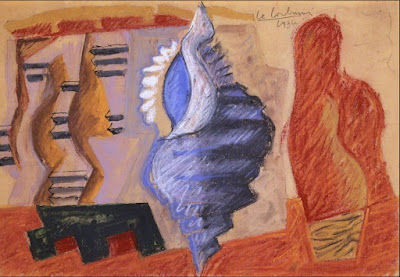SHELL . ARCHITECTURE
SHELL - Golden Ratio

The Golden Ratio or the Fibonacci Numbers, 0.142857 (1/7), is a significant ratio which dominates the human perception of the universe and the aesthetics in the field of Astronomy, Mathematics, Architecture and Fine Arts for thousands of years. 'The Golden Curve' generated by the Golden Ratio grid happens to match with many curves found in the nature. The Nautilus Shell is one. Of course not all the shape of the Nautilus shells match with the Golden Ratio Curve, however it is often possible to find one that matches exactly. Looking back to history, many pieces of architecture were designed on the basis of the Golden Ratio.Often, the Golden Ratio was applied to both the layout of the building as well as its façades. Examples are the Great Pyramids built by the Egyptians, the Parthenon built from 447 - 438 BC, the Villa Rotonda by Palladio, the Notre Dame in Paris and many buildings by Le Cobusier such as the Villa Savoye and many more. For architects, the Golden Ratio is a key to achieve a sense of compositional beauty in a logical and orderly manner. It imposes a sense 'decorum' upon the beholders.
SHELL - 'Objects of Poetic Reaction'


Le Corbusier had a collection of natural found objects in his
studio, this is what he called 'objets à réaction poètique' , 'objects of poetic reaction'. These objects include pine-cones, bones, natural stones, crab shells and the Nautilus shells. For Le Corbusier, a shell is a source of both structural and aesthetic inspiration for his creation of Architecture. Le Corbusier believed that an architectural form inspired by nature will create a sense of harmony with its surrounding site which belongs to nature.
Some theories argue that Le Corbusier's Ronchamp was inspired by the shape of a crab shell. Simultaneously, his staircase design in the Villa Savoye came from the internal structure of a shell.
SHELL - Architectural Motif
The 'Shell' has became an architectural motif throughout history. Shell, the object, was once the money for many ancient civilisation; it appeared in faire tales and Greek mythologies. Because it has both social, historical and cultural significance to the human beings, it is used as an occurring feature in architecture. This often appears in the ornament, material finishes, furniture and the structure of a building.
References
http://www.furniturelibrary.com/the-sea-shell-design-motif/
http://hyperallergic.com/75809/le-corbusiers-objects-of-poetic-reaction/
https://www.artsy.net/artwork/le-corbusier-bark-and-shell
https://www.youtube.com/watch?v=ykVBV07fO0I
http://www.goldennumber.net/nautilus-spiral-golden-ratio/



No comments:
Post a Comment